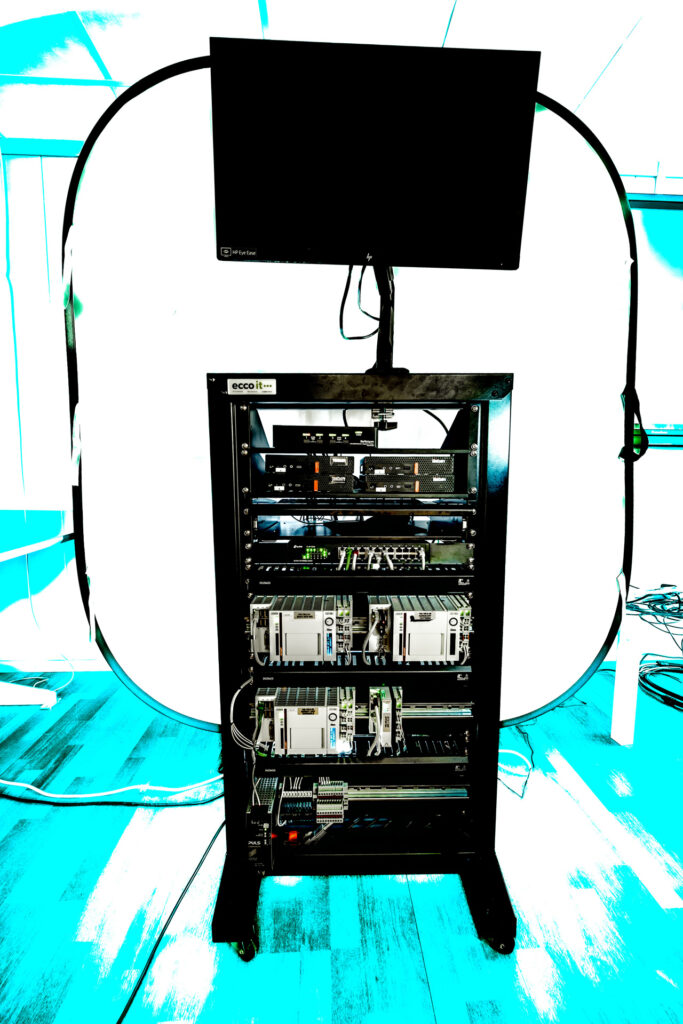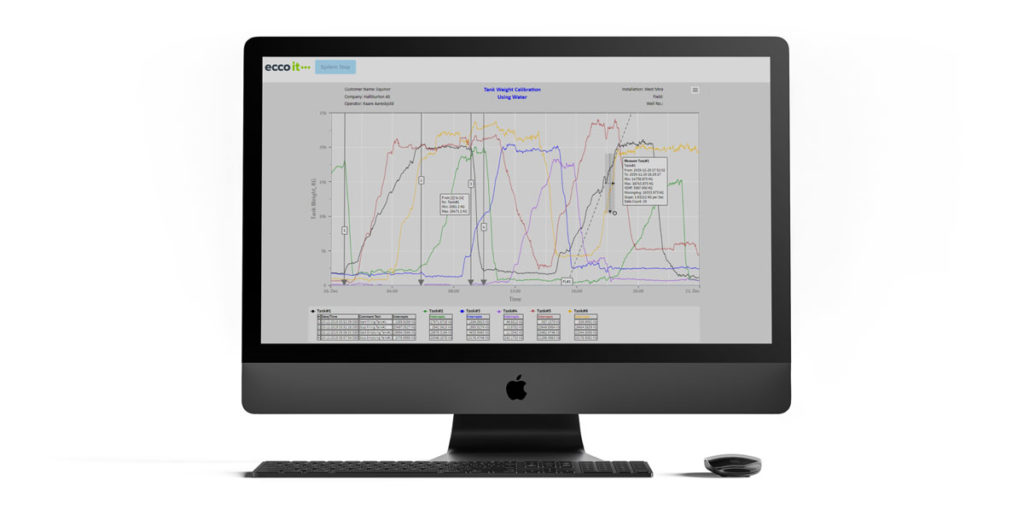OUR APPROACH TO INDUSTRIAL AUTOMATION
EXPAND THE LEVEL OF AUTOMATION TOWARDS AUTONOMY
It is important to keep two points in mind when choosing your solution for control and monitoring:
• Satisfy current specifications
• Room to meet the expectations of the future development
Use of standardized, open and pure web technologies across our portfolio, secures both of these considerations
EXPLOITING THE FULL POTENTIAL OF AUTOMATION WILL BENEFIT BOTH ECONOMY AND ENVIRONMENT
- Objective: Reduce cost and climate impact through reduced human presence, decision making based on facts and full utilization of available data
- Method: Increase level of industrial automation and integration
- Instrument: Standardized and open technologies (non-proprietary) to provide our customers the greatest possible degree of flexibility and freedom
- Tools: OPC UA and ISA-95 standards, HTML pure web communication and displays
Our selection of professional disciplines, knowledge and tools entails:
We enable future-proof industrial automation
Industrial automation begins with the introduction of sensors and actuators. These communicate status and on command, change the operational parameters. Our use of standardized and open technologies for control, structuring, communication, and presentation facilitates integration of sub systems into a common control system. All systems are controlled and monitored through a common communication network, avoiding a tangle of separate monitors and networks.
Using pure web technology, any relevant personnel will have the opportunity to control and monitor from anywhere.
Any process generates a large amount of data that must be utilized to create value. Standardized and open technologies ensure that data from various sources and systems can be freely exchanged within all levels of a business.
ESTABLISHING A GLOBAL CONTROL CENTER
Our collection of standardized and open-source technologies (OPC UA, atvise® and HTML5), combined with our library of function blocks built up through more than a decade of experience allows you to have real time control over your worldwide activity without having to make a significant investment. The internet make you present without your presence!
From this global control center the operator can, assuming a sufficient internet connection, control and monitor a process that takes place anywhere in the world. It also provides the opportunity to collect and compare real time process data from several machineries at locations around the globe.
EXPAND THE LEVEL OF AUTOMATION TO ACHIEVE ROBOTICS
We have already expanded the existing remote control system with automated sequences. By stitching together command sequences for a process using conditions and algorithms we made a sequence that is started with a simple command from the operator and will end automatically when the selected task is completed. This has reduced the number of keystrokes required from around 60 to just one.
There are two significant benefits to be gained from this:
- Improved quality: each operation is performed identically with the same degree of quality – completely without human interference and the risk it may entail.
- Improved security: in case of long-distance control via the internet, scheduled task will be completed even if the internet connection is lost, as the program logic is stored and executed on the local PLC.
We test our automated processes thoroughly in a simulator before they are used in real applications.
Automation of processes – also expressed as Robotization, is a necessary step in the direction of autonomous systems.
That is the long-term goal!

ACT WHEN NEEDED AND NOT BY SCHEDULE
There is no shortage of data, but its significance may be hidden in the sheer amount that is collected. Insignificant data must be removed allowing relevant data to form the foundation for meaningful real-time information about status here and now:
- Read multiple data sources in real time via the OPC UA interface
- Simplify by adding KPIs and context
- Visualize & personalize to give a clear overview
- Alerts tell you when to look: Is it good or bad, high or low priority, my responsibility, changing, getting worse, critical, etc.
Monitoring real-time parameters and their performance, analyzing, creating KPIs and visualizing will bring significant gains:
- Improved operations
- Reduced downtime
- Shorter delays
- Improved risk management
- Reduced waste
- Objective decisions
BOUNDLESS INTERACTION BETWEEN CONTROL SYSTEMS AND ENTERPRISES
The Industrial Internet of Things merges Operational Technology (OT) and Information Technology (IT), which means that data is exchanged between process floor and the higher-level IT infrastructure. To connect different types of machines, facilities and networks with different types of advanced sensors, controls and software applications, a standard for such interaction is required.
OPC UA is THIS standard!
- All participants speak the same language
- The communication is secure and trusted
- Data is converted into knowledge
Beyond the mere communication, it defines a data model to shape unified server address spaces and to ensure a Plug & Play capability of the participating devices and sensors. Only the created data model must be maintained.
With this, the prerequisites for the concept of Industry 4.0 and the ISA-95 standard are available.
Industry 4.0 describes how businesses can use technology to transform into a fully digital operation. These technologies include industrial IoT, automation and robotics, simulation, additive manufacturing, and analytics. Industry 4.0 is driven by a need to boost efficiency, become more agile to respond to market unpredictability, improve quality, and to enable new business models.
The ISA-95 standard defines a model for data exchange between all levels of an enterprise; from field level to control and operation level and up to company level.

Actual performance is presented graphically on any device that include a web browser
BIG DATA IS AVAILABLE - THE CHALLANGE IS EXTRACTING INFORMATION
Via our control systems, a huge amount of process data is funneled through our standardized function blocks. These have no value without storage, structuring and analysis. The benefits of using data as input for continuous improvements are clear. These days, several unwanted incidents related to operation of process facilities, result in an unknown cause and no lessons learned. This implies mistakes will be repeated! Utilization of available data can help uncover causes of failure, allowing measures to be taken in order to prevent the incident from recurring. However, utilization of these available process data requires active participation from the operator in terms of storage, structuring and presentation.
We present the data you need for analysis – standardized for convenient import through the third-party solutions of your choice.
Big data requires storage capacity. A huge capacity. As a contribution to limiting the requirement for massive servers, our automation technology provider, Beckhoff, has developed solutions to filter the significant from the insignificant. The insignificant is discarded immediately, while the significant is delivered for storage and further processing.
WITHIN OPERATION TECHNOLOGY, SILOS STILL REMAIN AN ISSUE
Considerable attention has been given to data organized in silos and how this makes the information inaccessible and almost worthless. However, similar attention is virtually absent when it comes to operational processes and the associated silos. The cost of this slight is massive!
Common practice accepts that each operation must have its own crew – with virtually no sharing of resources. As we move forward, and the degree of automation increases, it is obvious that someone needs to start tearing down these barriers.
Established routines need to be reassessed.